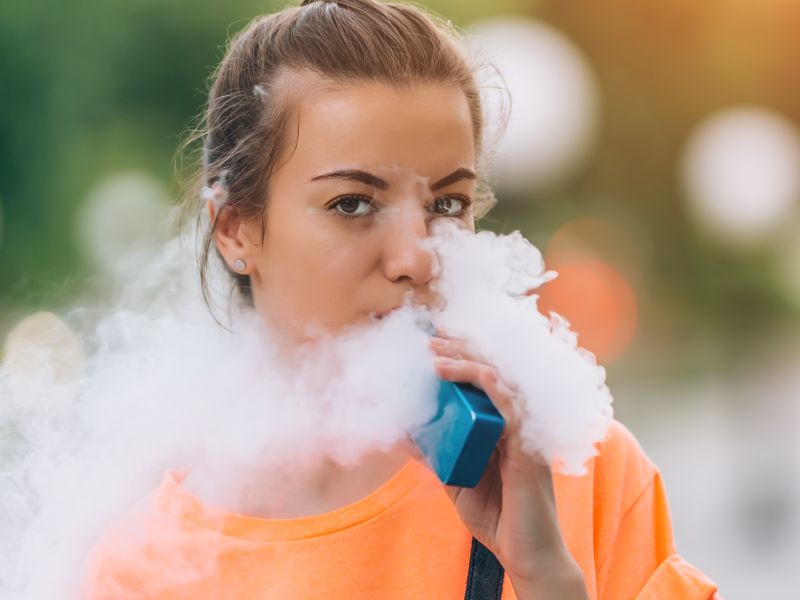
An epidemic of vaping by American teenagers shows no signs of stopping, with 2019 data finding more than a quarter (27.5%) of high school students using e-cigarettes.
The rate was somewhat lower, but still troubling, among middle school kids - about 1 in every 10 vaped, according to new research from the U.S. Centers for Disease Control and Prevention.
And just as happens with traditional cigarettes, the nicotine found in e-cigarettes can hook teens for a lifetime, with uncertain results for their health.
"Our nation's youth are becoming increasingly exposed to nicotine, a drug that is highly addictive and can harm brain development," CDC Director Dr. Robert Redfield said in an agency news release.
There was a small bit of good news from the new 2019 data: Only 5.8% of high school kids and 2.3% of middle school students smoke traditional cigarettes.
But when all sources of nicotine - vaping, cigarettes, pipes, cigars, hookah, and smokeless tobacco - are added up, about 1 in every 3 high school students (4.7 million) and about 1 in 8 middle school students (1.5 million) use some kind of tobacco-derived product, the CDC said.
For the sixth year in a row, e-cigarettes were the most widely used tobacco product among high school and middle school students, the report found.
Many students use more than one tobacco product. Among current tobacco product users, about 1 in 3 middle and high school students (2.1 million) used two or more tobacco products, the CDC found.
"Youth use of any tobacco product, including e-cigarettes, is unsafe. It is incumbent upon public health and health care professionals to educate Americans about the risks resulting from this epidemic among our youth," Redfield said.
Experts who work to fight nicotine addiction among kids and adults weren't surprised by the new numbers.
"Although it is encouraging to see the decline of combustible cigarette use among our youth, the alarming rates of e-cigarette use threatens to undo all the good that has been accomplished through tobacco control measures," said Patricia Folan. She directs the Center for Tobacco Control at Northwell Health in Great Neck, N.Y.
But there was one glimmer of hope: The new report found that almost 58% of current middle and high school students who use tobacco products said they were seriously thinking about quitting all tobacco products, and 57.5% said they'd stopped using all tobacco products for one or more days because they were trying to quit.
Efforts to help them are out there, Folan said.
"Programs to educate teens, as well as parents, are helping to alert the public about the dangers associated with vaping," she noted, but more is needed to help kids already addicted kick the habit.
Peer-to-peer outreach - basically, making vaping less cool among teens - would help, Folan said, as would ban on advertising and the use of social media "influencers" who promote e-cigarettes.
Dr. Len Horovitz, a lung health specialist at Lenox Hill Hospital in New York City, agreed.
"Movies, advertising and peer pressure all contribute to an unprecedented wave of nicotine abuse," he said. "This is a national crisis."
Horovitz also believes flavored vapes are luring kids in. Already, many states have moved to ban flavored versions of e-cigarettes, which are thought to be especially enticing for youth.
The new data was published Dec. 5 in the CDC's journal Morbidity and Mortality Weekly Report.
Sources: Patricia Folan, D.N.P., director, Center for Tobacco Control, Northwell Health, Great Neck, N.Y.; Len Horovitz, M.D., pulmonary specialist, Lenox Hill Hospital, New York City; U.S. Centers for Disease Control and Prevention, news release, Dec. 5, 2019.







0 Comments